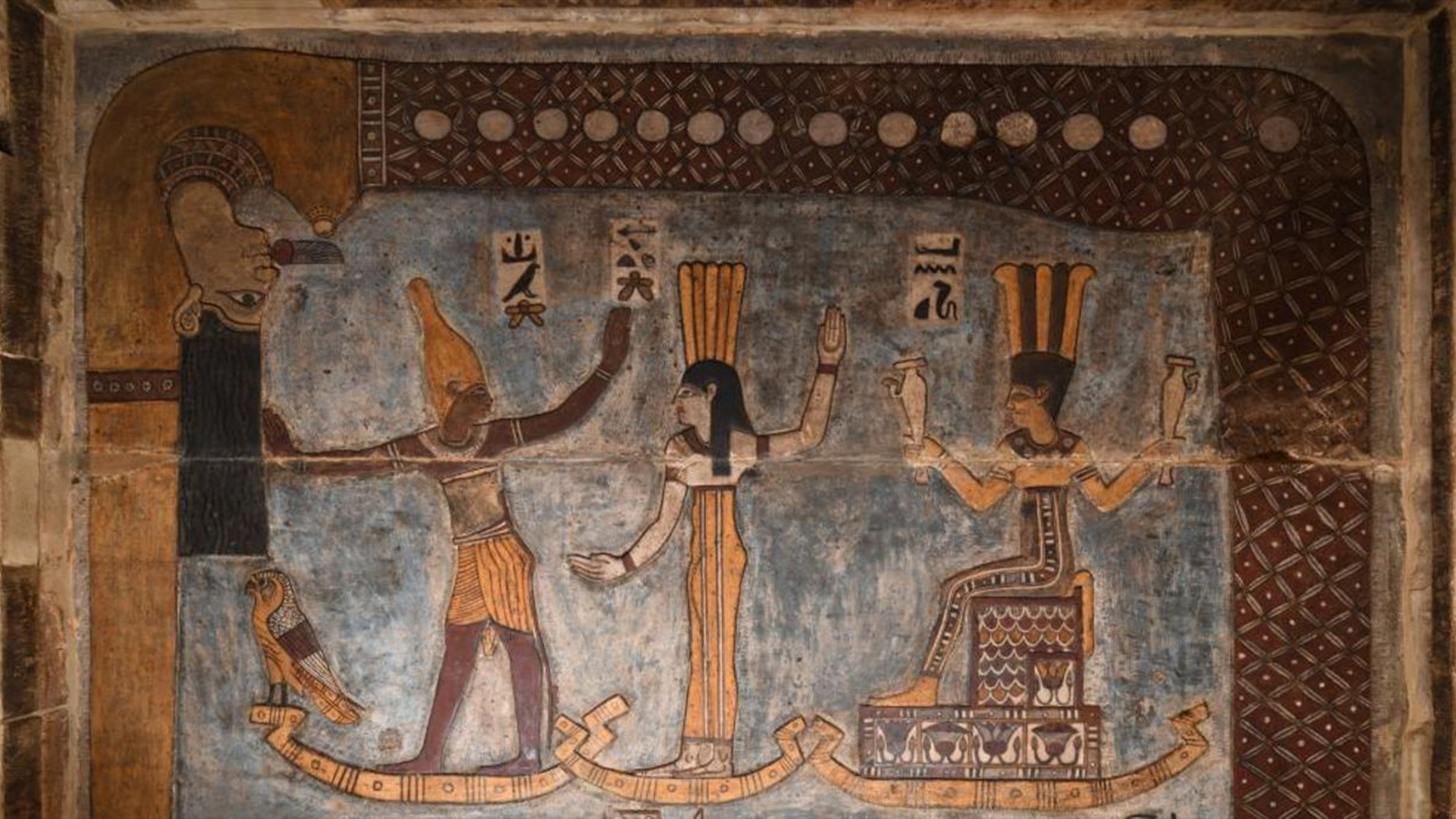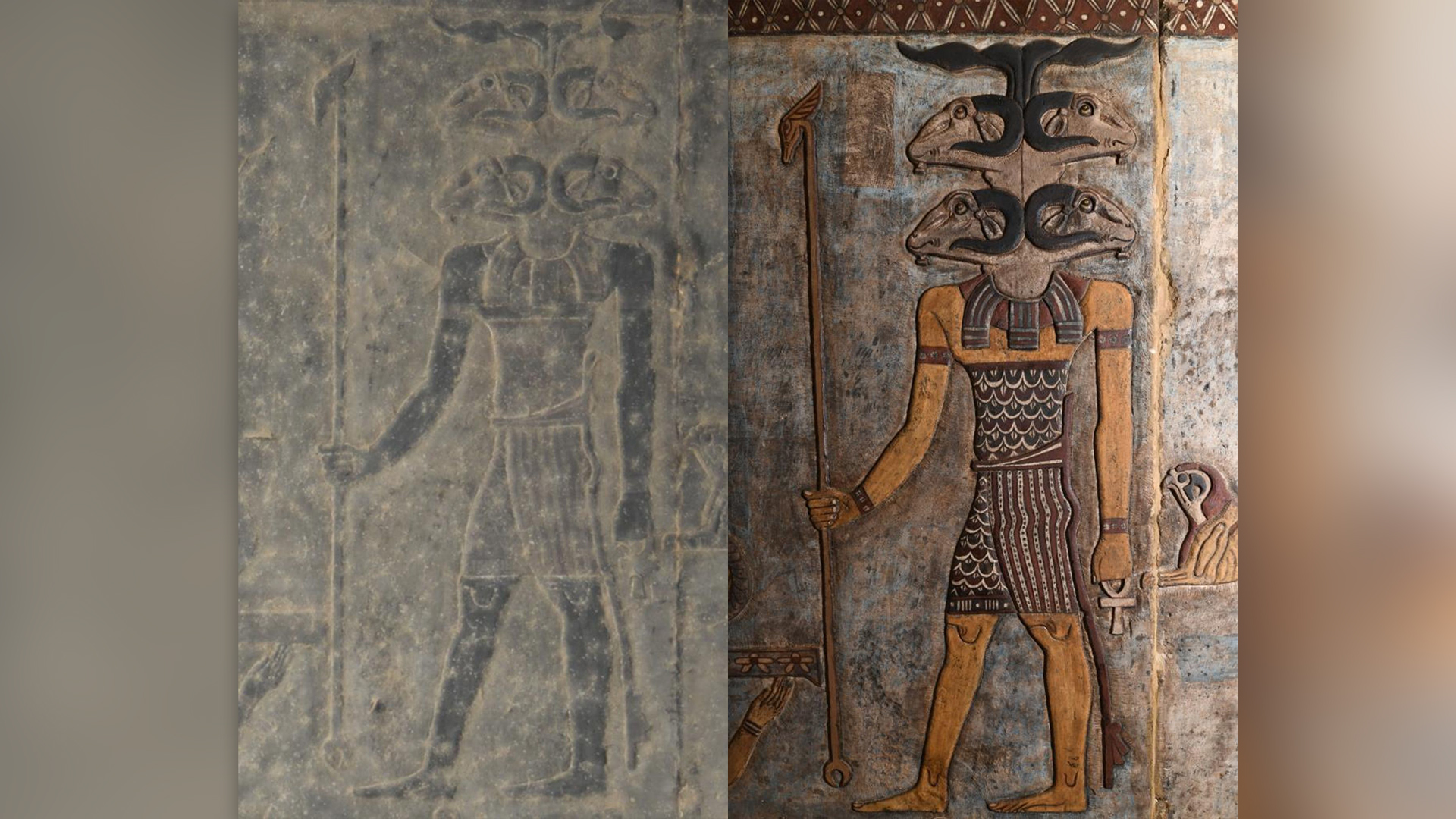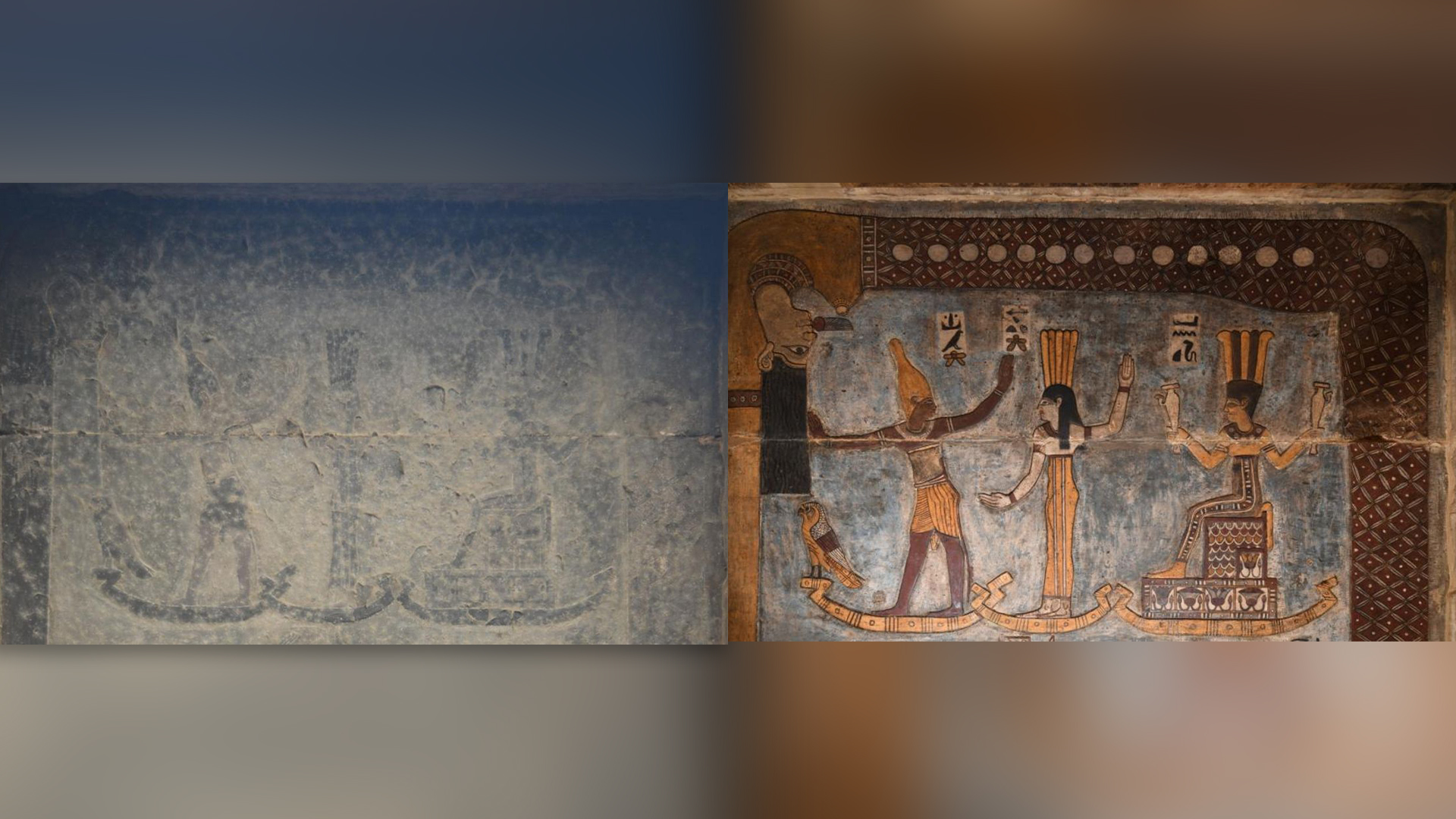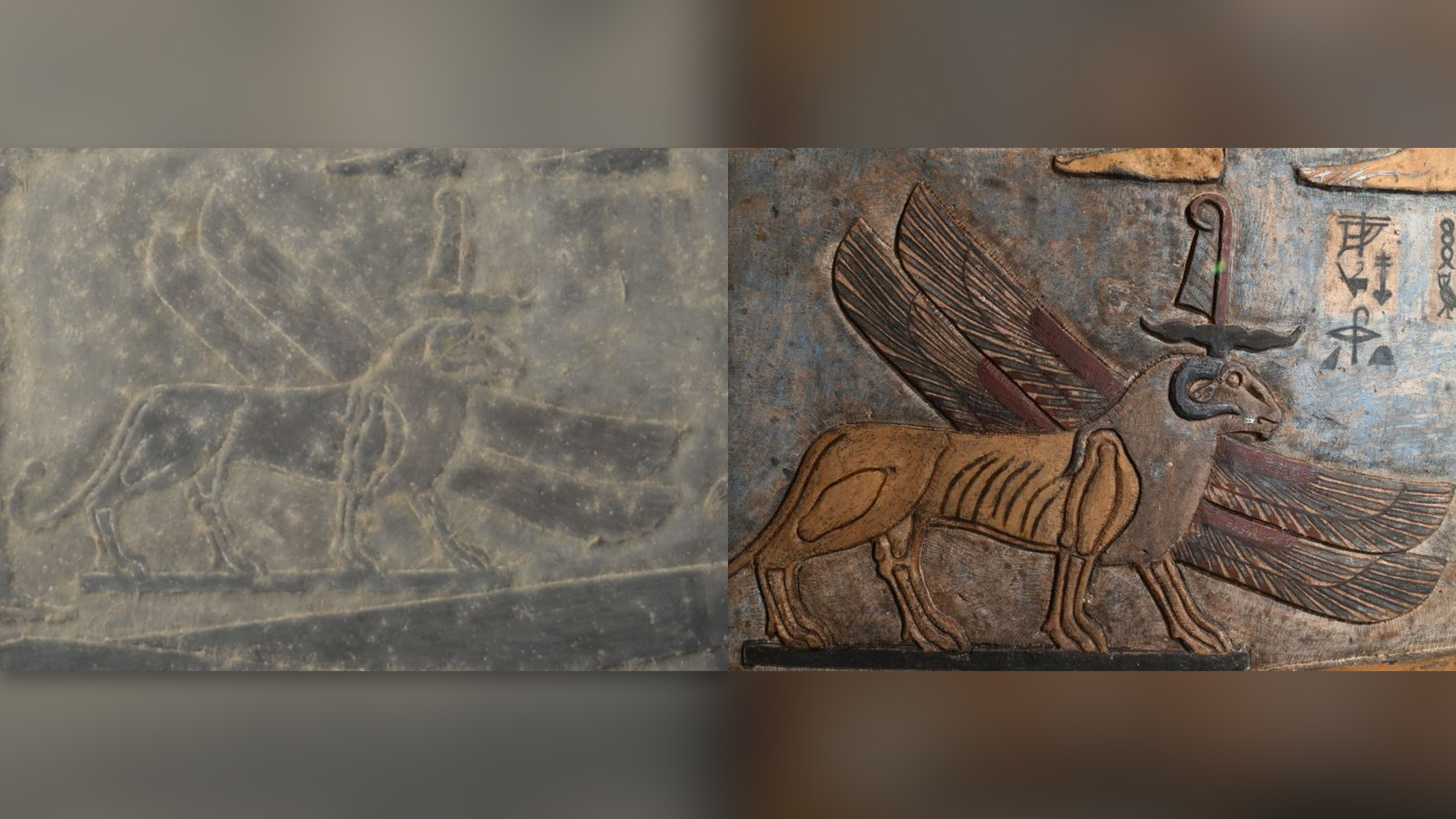Ancient New Year's scene from Egypt uncovered on roof of 2,200-year-old temple
Researchers restored an ancient painting of the gods depicted at New Year's during restoration work at the Temple of Esna in Egypt.

A stunning New Year's scene painted by ancient Egyptians has been uncovered by researchers restoring artwork on the ceiling of the Temple of Esna — a temple built around 2,200 years ago that underwent a major renovation about 2,000 years ago when the Romans controlled Egypt.
The paintings show the Egyptian deities Orion (also called Sah), Sothis and Anukis on neighboring boats with the sky goddess Nut swallowing the evening sky above them — a mythology that details the Egyptian New Year, according to a statement from the University of Tübingen in Germany, which jointly led the restoration with the Egyptian Ministry of Tourism and Antiquities.

In the depiction, Orion represents the constellation of the same name, while Sothis represents Sirius, a star which was invisible in the night sky in ancient Egypt for 70 days of the year before becoming visible again in east, that day marking the ancient Egyptian New Year, Christian Leitz, an Egyptology professor at the University of Tübingen who is part of the team, said in the statement. The Nile seasonally flooded at this time, and the ancient Egyptians believed that about 100 days after the appearance of Sirius, the goddess Anukis was responsible for the receding of the Nile's flood waters.
Related: See gorgeous ancient Egyptian 'mummy portraits' from nearly 2 millennia ago
The ancient Egyptian New Year would have occurred in mid-July on our calendar, Leitz told Live Science in an email.

The New Year's artwork is the latest of several discoveries scientists have made at the Temple of Esna, whose paintings were obscured by two millennia's worth of soot, grime and even bird droppings. For the past five years, scientists have been cleaning the ceiling, revealing a variety of imagery including depictions of the ancient zodiac and various astronomical constellations, mythological goddesses and more than 200 inscriptions that were previously unknown, according to the statement. The temple does not appear to be dedicated to a single god and analysis of its remains may allow scholars to better understand more about the meaning and purpose of the decorations.

Fiery wind
As the team finished cleaning the ceiling, they restored several other paintings. One of them— a representation of a lion's body with four wings and a ram's head — represents the "south wind," according to an inscription. In ancient Egypt, the south wind was associated with scorching heat and it's possible that the "lion represents the power of the heat," Leitz said in the email.
Sign up for the Live Science daily newsletter now
Get the world’s most fascinating discoveries delivered straight to your inbox.
Now that the ceiling's restoration is complete, the team is cleaning the temple's walls, columns and pronaos (the front area). This restoration is expected to reveal new colors and details of images that can faintly be seen through the grime, such as the "thrones of the gods" and details about their clothing, Leitz said.

Owen Jarus is a regular contributor to Live Science who writes about archaeology and humans' past. He has also written for The Independent (UK), The Canadian Press (CP) and The Associated Press (AP), among others. Owen has a bachelor of arts degree from the University of Toronto and a journalism degree from Ryerson University.









